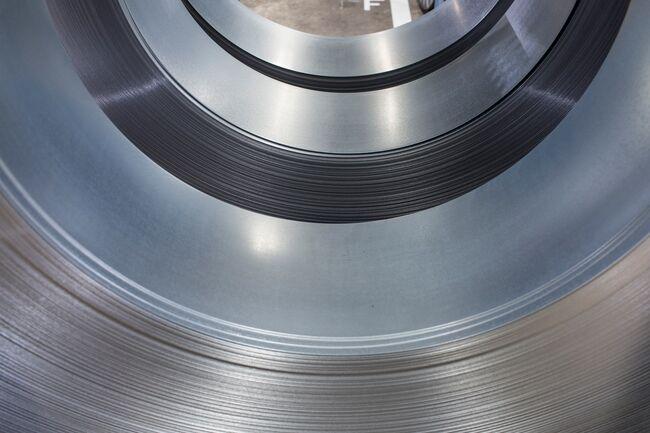The extraction and consumption of raw materials. Using materials more efficiently. Producing less waste and avoiding adding to landfills.

These are some of the biggest challenges that we all must tackle full stop – let alone that must be addressed in the built environment as we seek to tackle the climate emergency.
Designers and specifiers want to reduce the environmental impact of construction projects. Their project specifications are naturally changing to reflect choices that are seen as positive: solutions for lower embodied or operational carbon, material transparency and responsible sourcing, the availability of EPDs, and so on.
In the right context, and selected for the right reasons, any or all of these choices can be drivers of the ‘right’ kind of change. Fundamentally, however, we must tackle the commodification of nature and the unceasing pressure on finite resources in order for those choices to have a long-term positive impact.
Achieving a balance of short- and long-term action
Embodied carbon is a significant focus for the construction industry, as people look to quickly reduce carbon emissions. A product with lower embodied carbon might use fewer resources as a whole, or be responsible for fewer carbon emissions. But if it can only be used once then it still has to be disposed of at the end of its useful life, and it still contributes to the linear economy, especially if reuse or recycling is not possible.
Many specification decisions don’t take into account how the carbon emissions associated with disposing of products – even ‘lower carbon’ ones – will be dealt with as part of a net zero future. Potential unintended consequences such as these are why action that is taken today must be compatible with the aim of protecting tomorrow.
Moving towards an integrated circular economy is one of the ways in which we can protect tomorrow, because being able to use materials and products for longer, will reduce demand for raw materials and make more efficient use of the resources we do have to consume.
As a material, steel has many advantages in terms of its ability to be reused, remanufactured and recycled. There are also innovations that mean the amount of steel needed to construct a building in the first place can be reduced. Reduce, reuse, remanufacture and recycle are what Tata Steel calls ‘the four Rs’ that mean steel can aid the transition to a circular economy.
But what happens when steel is manufactured into a specific product, requiring it to go through multiple processes?
How Tata Steel’s Shotton site is using materials efficiently and reducing waste
It’s one thing to talk about steel as a material generally, but the processing of that material into a specific product – like wall or roof cladding panels – involves various processes to create a finished item.
Each process requires materials and resources of its own. It’s therefore important that material manufacturers operate as efficiently as possible – and not just focus on embodied carbon – in order to demonstrate a sustainable approach to using finite resources.
To start with, manufacturers have a responsibility to be open about the processes and materials they use. They can be transparent about their supply chains, and how they are driving reductions in environmental impact up and down the supply chain. A responsible manufacturer positively welcomes engagement with customers and external stakeholders, outside of the project environment, to explain the efforts they’re making.
Tata Steel’s Shotton site, in Deeside, North Wales, carries out galvanising and painting operations to create pre-finished steel products used in roof and wall cladding systems for the construction market. Maximising material efficiency is a key focus area in Shotton’s sustainability commitment, and managing materials used across the whole site is part of how the site aims to have an ongoing positive impact on the planet.
Water consumption, energy use and onsite waste are all monitored at Shotton. There are clear plans in place to reduce consumption, and reuse or repurpose essential resources where possible.
Over the years, multiple projects have reduced the amount of waste generated at Shotton. An example is paint wastage where significant improvements have been made. The majority of paint waste is returned to the paint suppliers for remanufacture into future requirements, resulting in 99.8% of our supplied paint being used or recovered.
Similarly, galvanising zinc dross is reclaimed, recovered and remanufactured into prime grade alloys, which reduces raw material requirements.
More activities are planned to increase material use efficiency, and to meet the goal of recovering 100% of the waste generated and therefore zero onsite waste. The Shotton site itself recovers around 90% of its onsite waste currently.
Conserving water is one of the UN’s Sustainable Development Goals. At Shotton, water for one of the manufacturing lines comes partly from reservoirs supplied by the river Dee. After use, the water is treated and returned to the river, some of which is cleaner than when it was brought onto site.
Using materials more efficiently is one of four key principles employed at Shotton in order for the site to have a positive legacy for the planet. All four are equal in their importance, with the other three principles being carbon footprint reduction, developing products and services to support sustainable construction, and protecting biodiversity.
Related blog articles:
How can manufacturers help specifiers to make sustainable product choices?
What does a manufacturer’s long-term commitment to carbon footprint reduction look like
It is clear that the biodiversity emergency is as urgent and important as the climate emergency



































































































































































































































